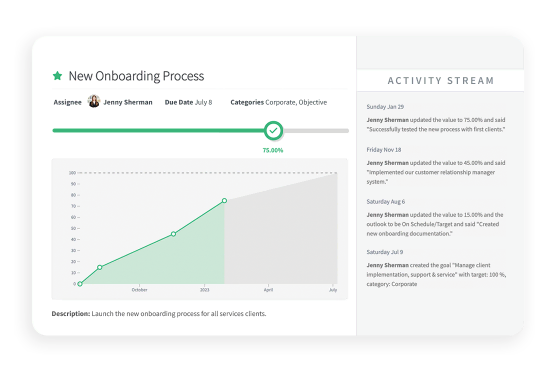
What Is Organizational Alignment? (And How to Achieve It)
Organizational alignment, also referred to as 'strategic alignment', is a company's ability to get everyone on the same page about what needs to get done and how.
But importantly, it's also about a company's ability to paint the bigger picture and get every individual within the business to see themselves in it. Or, as organizational strategists Jonathan Trevor and Barry Varcoe put it in their HBR deep dive, organizational alignment is how you bridge "the gap between ambition and performance."
And if you're not hitting efficiency benchmarks or reaching your potential as an organization, you could have an alignment problem. But don't worry, there are ways to fix it.
Why Is Organizational Alignment So Elusive?
If getting your numbers back on track and fighting employee disengagement feels like an uphill battle, know that you're not alone.
Organizational alignment is an ongoing challenge for every business, regardless of shape or size. For example, investment tech startup Betterment changed their approach to organizational alignment and employee performance management three times on the road to reaching 100+ employees.
And since the beginning, massive household names like Starbucks have built their empires on organizational alignment systems in order to consistently hit growth targets and provide an awesome customer experience across some 25,000 stores in 62 countries.
With so many diverse individuals under one roof, true alignment is no small feat. But it's not impossible, either. Let's break it down to the core building blocks of a truly aligned organization.
Putting the Pieces Together
Companies with strong alignment know their goals, actions and purpose. Here's what that means.
Goals: What are we driving the business towards?
Regardless of whether you're using annual revenue goals or departmental OKRs, an aligned organization puts the proven growth metrics first and foremost.
Depending on where you are and what you want for your business, your business plans can and should vary. For more on the core elements that make a goal effective, check out our breakdown here.
Actions: How will employees achieve those goals?
Some 95% of a company’s employees are completely unaware of or confused about the business strategy. And only 7% know what's expected of them in order to help achieve company goals.
Once you're clear on the tangible results you want to see, you owe it to your employees to give them everything they need to make those results happen.
Clarify the specific day-to-day tasks, actions and behaviors at the individual and team level that, when compounded over time, add up to high-level success.
Purpose: Why is it important to achieve these goals, with this particular approach
Cautionary tales like that of Enron and Wells Fargo show us that breakdowns in organizational alignment often occur when employees are incentivized by the wrong things.
State your mission regularly and your values clearly so that every employee knows exactly what are your business goals and the behaviors that help you meet them.
Keep Trying
We all dream of spearheading the kind of organizations that make business history. Organizations where every last individual is passionately pulling in the same direction. But the truth is, business is messy, chaotic and fraught with change — and there's no magic formula that can ever make it otherwise.
But luckily, there are many ways to make sure that the above three performance points are always being met at every level of the organization. Cascading goals is a classic approach used by many — but even companies who reject the classic hierarchy (like Asana and their AOR model), can create an approach that makes sense for their unique business culture.
What matters is that you're willing to learn and adjust as you grow.
Because as tempting as it is to blame employees for angry customers or unmet targets, the reality is it's every leader's responsibility to be the guiding force that lights a clear path forward for the business, and everyone in it. After all, how can we expect employees to support a strategy they don't know exists?



